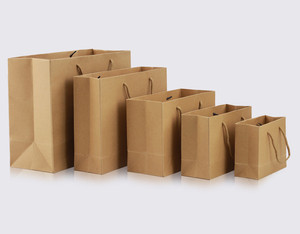
The transition from plastic to paper bags is often viewed as a positive step toward environmental sustainability. Paper bags, made from renewable resources, present an eco-friendly alternative to plastic bags, which are notorious for their detrimental effects on ecosystems and wildlife. This article delves into the multifaceted aspects of paper bags, exploring their history, production process, environmental benefits, economic implications, challenges, innovations, and future prospects.
The History of Paper Bags
The history of paper bags dates back to the mid-19th century, a period marked by industrial innovation and an increasing demand for convenient packaging solutions. The first paper bag machine was invented by Francis Wolle in 1852. His machine was a breakthrough in the mass production of paper bags, setting the stage for their widespread use. Initially, these bags were simple and flat, serving basic purposes such as carrying small items.
The evolution continued with Margaret E. Knight’s invention in 1871, which introduced the square-bottomed paper bag. This design greatly enhanced the bag’s capacity and stability, making it more functional for a broader range of uses. Knight’s contribution earned her the nickname “the mother of the grocery bag.” Over the decades, improvements in paper quality, printing techniques, and manufacturing processes have transformed paper bags into the versatile packaging solution we see today.
The Production Process of Paper Bags
The production of paper bags begins with the sourcing of raw materials, primarily wood pulp from trees. The type of wood used can vary, with softwood trees like pine and spruce being favored for their long fibers, which provide strength and durability. The wood undergoes a process called pulping, where it is chipped and chemically or mechanically broken down into pulp.
The pulp is then washed and bleached to achieve the desired color and purity. This pulp is spread onto wire screens and pressed to remove excess water, forming a continuous sheet of paper. The paper is dried, coated, and sometimes treated with additional chemicals to enhance its properties, such as water resistance or strength.
Once the paper is ready, it is cut into large rolls and fed into bag-making machines. These machines fold, cut, and glue the paper into bags of various shapes and sizes. Quality control is a crucial step in this process, ensuring that each bag meets the required standards for strength and durability. The final product is then packaged and shipped to retailers and consumers worldwide.
Environmental Benefits of Paper Bags
Paper bags offer several environmental benefits over their plastic counterparts. Firstly, they are biodegradable and compostable, meaning they can break down naturally without leaving harmful residues. This property significantly reduces the environmental impact of litter and waste disposal. Unlike plastic bags, which can take hundreds of years to decompose, paper bags can degrade in a matter of weeks under the right conditions.
Additionally, paper bags are made from renewable resources. Trees, the primary source of paper, can be replanted and sustainably managed. Responsible forestry practices ensure that the environmental footprint of paper production is minimized. Moreover, paper bags have a higher recycling rate compared to plastic bags. Recycled paper reduces the need for virgin materials, conserving natural resources and energy.
The production process of paper bags also tends to generate fewer greenhouse gas emissions than plastic bag manufacturing. While both processes have their environmental costs, the overall carbon footprint of paper bags is generally lower, especially when considering their end-of-life disposal. These benefits make paper bags a more sustainable choice for consumers and businesses alike.
Economic Implications of Paper Bags
The shift from plastic to paper bags has significant economic implications for various stakeholders, including manufacturers, retailers, and consumers. For manufacturers, the demand for paper bags has spurred growth and innovation in the paper industry. Companies are investing in new technologies and processes to enhance the efficiency and sustainability of paper bag production. This growth has also led to job creation and economic opportunities in the forestry and manufacturing sectors.
For retailers, the transition to paper bags involves balancing cost considerations with environmental responsibility. Paper bags are generally more expensive to produce than plastic bags due to the higher costs of raw materials and production processes. However, many retailers are willing to absorb these costs or pass them on to consumers in the form of higher prices, driven by consumer demand for sustainable packaging options.
Consumers, on the other hand, may face higher costs at the checkout. However, the willingness to pay a premium for eco-friendly products is growing, reflecting a broader shift in consumer values toward sustainability. Additionally, some governments have introduced regulations and incentives to encourage the use of paper bags, further influencing market dynamics.
Challenges in the Use of Paper Bags
Despite their advantages, paper bags are not without challenges. One significant issue is the environmental impact of paper production. The process of turning trees into paper is resource-intensive, involving large amounts of water, energy, and chemicals. Additionally, deforestation, if not managed sustainably, can lead to habitat loss, soil erosion, and reduced biodiversity.
Another challenge is the durability and functionality of paper bags. While they are suitable for many uses, paper bags are less durable than plastic bags, particularly when exposed to moisture or heavy loads. This limitation can restrict their applicability in certain scenarios, such as carrying wet or heavy items.
The recycling process for paper bags, although beneficial, also presents challenges. Contaminants such as food residues can complicate recycling efforts, reducing the quality of the recycled paper. Moreover, the energy required for recycling paper, while generally lower than producing new paper, is still considerable.
Innovations in Paper Bag Technology
The paper bag industry is continuously evolving, with innovations aimed at addressing its challenges and enhancing its benefits. One area of focus is improving the strength and durability of paper bags. Researchers and manufacturers are developing new materials and treatments to make paper bags more resistant to moisture and tearing. For example, coatings and laminations can provide a protective barrier without compromising the bag’s recyclability.
Another innovation is the use of alternative fibers and materials in paper bag production. Agricultural residues, such as straw or bagasse (a byproduct of sugarcane processing), are being explored as sustainable alternatives to wood pulp. These materials can reduce the reliance on trees and utilize waste products from other industries.
Advancements in digital printing technology have also transformed the paper bag industry. High-quality, customizable prints can be produced efficiently, allowing businesses to use paper bags as a marketing tool. This capability enhances the aesthetic appeal and functionality of paper bags, making them more attractive to consumers. If you want to know more information about paper bags with handles visit TopUSAPackaging.
The Future of Paper Bags
The future of paper bags looks promising, driven by increasing environmental awareness and regulatory pressures to reduce plastic waste. As technology advances, we can expect further improvements in the sustainability and functionality of paper bags. The development of biodegradable coatings, stronger materials, and more efficient production processes will likely enhance the viability of paper bags as a long-term solution.
Furthermore, the adoption of circular economy principles could revolutionize the paper bag industry. Emphasizing reuse, recycling, and the use of renewable resources, the circular economy model seeks to minimize waste and environmental impact. In this context, paper bags could play a crucial role in creating a more sustainable packaging ecosystem.
Collaboration between governments, industries, and consumers will be essential to realizing the full potential of paper bags. Policy measures, such as subsidies for sustainable forestry practices and incentives for using recycled materials, can support the growth of the paper bag industry. At the same time, consumer education and awareness campaigns can drive demand for eco-friendly packaging solutions.
Conclusion
Paper bags represent a significant step toward more sustainable packaging solutions. Their history, production process, and environmental benefits highlight their potential to reduce the environmental impact of packaging. However, the economic implications, challenges, and ongoing innovations underscore the complexity of transitioning to paper bags. As we look to the future, continued efforts in research, policy, and consumer behavior will be crucial in maximizing the benefits of paper bags and minimizing their drawbacks. With concerted action, paper bags can play a pivotal role in building a more sustainable and environmentally responsible society.





